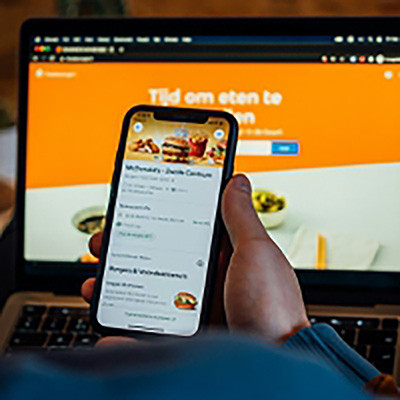✕

Column: industry Tag: Consumer Behavior,Food And Beverage,Digital Ordering,Online Food Delivery Published: 2024-08-08 17:12 Source: www.foodingredientsfirst.com Author: Anvisha Manral
07 Aug 2024 --- As dining out becomes increasingly digital with restaurants adopting novel ordering technologies, a new US study warns that online ordering influences consumer food choices and expenditure.

The findings draw from six studies in the field and reveal that digital modes of ordering, including kiosks, tablets and apps, often lead to consumers having lower cognitive involvement in placing orders, often leading to unhealthy food choices and increased spending.
Food Ingredients First sits down with Annika Abell, assistant professor of marketing at the University of Tennessee, Knoxville and one of the authors, to understand the impact of digital ordering on consumer decision-making and its implications for F&B establishments.
The study, published in the Journal of the Academy of Marketing Science, is authored by Dipayan Biswas, Christian Arroyo Mera and Abell.
The project started before the COVID-19 pandemic, focusing on people ordering food on websites.
“Covid happened, and technology in the food ordering process became more widespread. We saw QR codes, ordering kiosks, and all the food delivery aggregators like Uber Eats and GrubHub became common. That made us more interested in how this influences people’s choices when they order food online.”
The researchers conducted experiments in various settings to ensure robust effects, starting with controlled lab experiments where students made anonymous food choices from menus on paper and tablets.
Field studies were conducted in physical restaurants, including a Mexican eatery and a global dining chain with outlets in 23 countries. Anonymous patrons were again given paper surveys and a tablet with the additional option of placing orders with the restaurant staff. The team analyzed the ordering data and coded it into “healthy” and “unhealthy” choices.
The results revealed that 61% of digital orders, including delivery orders, were unhealthy — over 3% higher than non-digital orders.
“Across all these different settings, we found that overall, people choose relatively unhealthier when they make this choice on a digital device, including an ordering kiosk, a website, or a phone as compared to when they make that choice on paper or with the wait staff. We also found evidence in one study that people might spend more money when they make those choices digitally.”
Low cognitive involvement
Abell notes that a surprising outcome was that the effect is a little stronger in the evenings “when people are already more cognitively depleted from their day and are even likelier to choose indulgent options on a digital device.”
She terms this an application of the “Google Effect” where evidence indicates that people tend to be less cognitively involved when they use computers with search engines.
“We see them as an extension of our memory. The same thing seems to happen in a food choice environment, where if I have this digital device, I'm less likely to use my brain as much. I'm a little more mindless when I make that decision.”
The Google Effect can be observed in everyday life, and in this case, it translates into “going on a little more of an automatic faster mode, where you don't think as much about the choice you are making.”

Since the study indicates that people buy more when ordering digitally, there may be an opportunity to promote healthy eating among customers.
Implications for businesses
Abell notes that certain F&B businesses can benefit from this research, based on the type of restaurant. “If you are a restaurant or a business positioned as one that offers a lot of unhealthy items and that’s the goal to sell, then this digital technology can be helpful to some extent because people choose unhealthier.”
Businesses might also reduce costs by replacing restaurant staff with machines.
“However, do we really want people to make these unhealthy choices themselves?” Abell says. “Or can we nudge people to make better choices?”
Since the study indicates that people buy more when ordering digitally, there may be an opportunity to promote healthy eating. “Instead of suggesting customers add a side of French fries or another dip, restaurants could say, ‘add a side salad’ to bring in a balancing effect on digital devices.”
It will be interesting to observe how ordering technologies and consumer choices evolve, especially in hybrid environments where customers have both kiosks and people to place their orders with, notes Abell.
With businesses dabbling into AI-powered ordered processing systems, it might be worth seeing if these ordering kiosks can have “some algorithmic ability to put the best option together” for customers, given that they are already less cognitively involved.
“It’s all a matter of whether this is going to be used for the good of the consumer.”
To contact our editorial team please email us at editorial@cnsmedia.com
Previous:What Does A 'Class One' FDA Recall Mean?
Next:Different Regional Styles Of Baked Beans, Explained
Hot key words
Hot Products
Popular Vendors